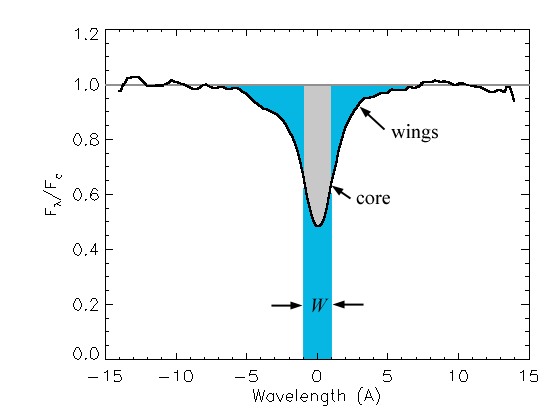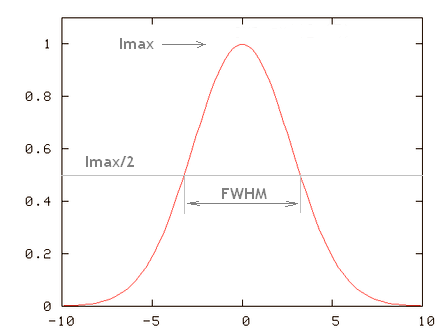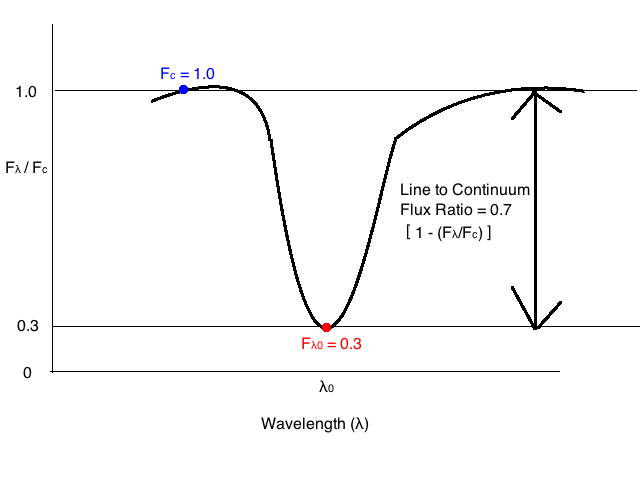I’m (for the most part) finished entering our reduced NIRSPEC data into the database. Now I can begin to determine the radial velocities for these objects. In order to find radial velocities, you cross correlate your object’s spectrum with the spectrum of a calibrator whose radial velocity is known. The x-axis “shift” between the two spectra allows you to determine the radial velocity. I’m pretty sure there are a couple of things I need to do before cross-correlating to find the radial velocities (like applying a heliocentric velocity correction to account for our motion around the sun). But we already have a cross correlation code written by another member of our group, and so hopefully things will move pretty quickly from here!
Sherpa – Week 1 (Plot)
This week, I began to play around with Sherpa, a scientific analysis tool written in Python. Sherpa has two options—you can either run it on its own (aka standalone Sherpa), or you can import it as a Python module, and utilize it in your own scripts. I want to use it for my own purposes, so I’m using it as a module. I’ve been taking notes to use for later documentation on how to use the software to make the spectroscopic measurements mentioned in my previous post.
This week, I learned how to take a spectrum (wavelength, flux, and statistical error arrays) and load them into a Sherpa data structure, and then how to plot the spectrum using Sherpa (instead of, say, matplotlib). For the purpose of brevity, I will hand wave these commands and jump to the plots.
Above is a Sherpa plot of one of the L dwarfs in my sample. It is high resolution NIRSPEC data, order 61 (to highlight the Potassium lines). In one easy command (specifically, plot_data), it plotted not only the spectrum, but the statistical error (which I supplied it). It also automatically labeled the axes, and added a title with the name of the target.
Above is a plot made in matplotlib. I made it not only to make a comparison of the plot styles of the two modules, but also to illustrate the difference between data taken on different nights. Each spectrum plotted here is order 61 from the same target as the Sherpa plot, but observed on different nights (the blue spectrum in this second plot exactly matches that of the first night). Also note that I did not plot the stat. error on the second figure. What stands out for me is that while you can easily notice the jumpiness of the pseudo-continuum, the pseudo-continuum itself is similar on each night. So I think this shows that making a model fit for measuring the potassium features will be roughly the same regardless of the night used.
-Dan
Spectral Line Measurements Visualized
This week I’ve started looking into making measurements of spectral features using Sherpa (program in Python). Before doing this, I wanted to understand what these measurements are, visually. These three measurements are Equivalent Width, Full Width Half Maximum (FWHM), and Line-to-Continuum Flux Ratio.

Shown in the figure above is the equivalent width (W) of an absorption line. The idea is you take the total area inside the absorption line, and create a rectangular box of the same area, extending from the continuum to the 0 flux line. The width of this box is the equivalent width. This measurement is used to describe the strength of the line (the higher the value, the stronger the line)!

Shown in the above plot is the Full Width Half Maximum (FWHM) of an emission line (it’s the same idea for absorption lines). You get the peak (maximum) value of the emission line, and draw a line at the half point. The width of the spectral feature at this flux value is the FWHM. For an absorption line, it’s the half of the minimum value instead of maximum. This measurement is used to describe how broadened the spectral feature is (the higher the value, the more broadened the line)!
Shown above is a sketch I made to illustrate the line-to-continuum flux ratio. In essence, you take the ratio of the flux of the continuum (the example used in the figure is a continuum flux of 1.0) to the flux of the max (or min) value of the feature (in the example, a value of 0.3) and subtracts it from 1. This measurement is used to characterize the depth of the line compared to the continuum (the higher the value, the deeper the line)! In the example above, the value is [1 – (0.3/1)] = 0.7
As illustrated above, these measurements describe a spectral feature. To recap, the equivalent width characterizes the overall strength of the line, the FWHM characterizes the width, or how broadened the line is, and the line-to-continuum flux ratio characterizes the depth of the line! Together, you can discern what the spectral feature may be saying about the physics of the scenario or target you are observing.
-Dan
Entering data into the database
This last week I’ve been getting familiar with our new python database by way of entering in the data I reduced last semester. So far I’ve input one night of data observed in September 2008 on the NIRSPEC spectrograph on Keck II. I have two more nights of data to input (11 or 12 objects), but it should go quickly!



